The Black-Backed Jackal, also scientifically going by the name Canis mesomelas, is a species with a dog-like head that features a protruding muzzle and high-pointed ears. The black hair that runs from the back of the neck to the tail is the key distinguishing feature of the black-backed jackal (Van Valkenburgh 1994). The breast is white, and the underparts are white to rusty-white, with the remainder of the body ranging in color from reddish brown to ginger.
The black-backed jackal is exclusively found in Africa. The species dwells in two distinct locations separated by around 900 kilometers. One region covers the continent’s southernmost point, which encompasses South Africa, Namibia, Botswana, and Zimbabwe. The other region is along the east coast, which includes Kenya, Somalia, and Ethiopia (Smithers 1983). This split might be due to geography.
In northern Tanzania, Olduvai Gorge (part of the Great Rift Valley) sits between both groups. This area is incredibly dry, making life quite challenging for most species.
Black-Backed Jackal: Species Profile
COMMON NAME: Black-Backed Jackal
SWAHILI NAME: Bweha mgongo-mweusi or Mbweha Shaba
SCIENTIFIC NAME: Canis mesomelas
TYPE: Mammal
FOOD: Black-Backed Jackals are opportunistic feeders with a varied diet. They primarily consume small mammals like rodents, hares, and small antelopes. They also scavenge on carrion, feed on insects, birds, reptiles, and occasionally eat fruits and vegetation.
HABITAT: Black-Backed Jackals inhabit a wide range of habitats, including savannas, grasslands, woodlands, and semi-desert areas. They are adaptable animals and can be found in both open areas and more densely vegetated regions. They are distributed across various parts of sub-Saharan Africa.
SIZE: Black-Backed Jackals are small to medium-sized canids. They have a body length ranging from 70 to 85 centimeters (28 to 33 inches), and their shoulder height is about 38 to 48 centimeters (15 to 19 inches). Males are slightly larger than females.
AVERAGE LIFE SPAN IN THE NATURAL HABITAT: The average lifespan of Black-Backed Jackals in the wild is around 10 to 12 years. However, they can live longer in captivity, reaching up to 16 years or more.
ACTIVE: Black-Backed Jackals are primarily nocturnal animals, meaning they are most active during the night. However, they can also be active during the early morning and late evening hours. They are highly adaptable and often adjust their activity patterns based on food availability and environmental conditions.
GESTATION PERIOD: The gestation period for Black-Backed Jackals is approximately 60 to 70 days. Females give birth to litters of 3 to 6 pups in underground dens. Both parents participate in raising and caring for the young.
WEIGHT: Black-Backed Jackals weigh around 6 to 14 kilograms (13 to 31 pounds), with males being slightly larger and heavier than females. They have a slender and agile build, enabling them to pursue prey and navigate their habitat efficiently.
SIZE COMPARISON TO A 6-FT MAN: Black-Backed Jackals are smaller than a 6-ft man. With a body length of 70 to 85 centimeters (28 to 33 inches) and a shoulder height of 38 to 48 centimeters (15 to 19 inches), they are compact and lightweight canids. Their distinctive black back and adaptable nature make them a common sight in various African habitats.
Physical Characteristics:
The Black-Backed Jackal (Canis mesomelas) is a medium-sized canid that exhibits a distinctive appearance. Here, we highlight its key physical characteristics:
1. Body Size and Weight
Adult Black-Backed Jackals typically measure around 40-48 centimeters in height at the shoulder and can reach a length of 70-85 centimeters from the tip of the nose to the base of the tail. They generally weigh between 7-10 kilograms, with males being slightly larger than females.
2. Fur Coloration
This species displays a striking contrast in fur coloration, which contributes to its unique charm. The name “Black-Backed Jackal” arises from the characteristic black saddle-shaped fur on its back, extending from the shoulders to the base of the tail. The rest of the body is covered in a sandy to golden-brown coat, while the underparts are lighter in color.
3. Ears and Facial Features
The Black-Backed Jackal possesses a pair of large, pointed ears that aid in acute hearing, enabling them to detect prey and potential threats from a distance. Their muzzle is slender, with a black nose and a set of sharp teeth that facilitate efficient feeding.
4. Tail Description
One notable feature of the Black-Backed Jackal is its bushy tail, which measures approximately 30 centimeters in length. The tail is predominantly black, with a white tip that acts as a visual signal during group coordination or territorial displays.
A. Unique Coloration:
The Black-Backed Jackal is characterized by its striking black saddle-like marking that runs along its back, contrasting with its reddish-brown or golden coat. This distinct feature gives the species its name and sets it apart from other canids in the region. The jackal has a sleek and slender body, standing at an average height of around 38-48 centimeters (15-19 inches) at the shoulder.
B. Adaptations for Survival:
Equipped with keen senses, the Black-Backed Jackal possesses excellent eyesight, hearing, and a well-developed sense of smell, enabling it to detect prey and navigate its environment efficiently. Its long legs and agile body make it an adept runner, allowing it to chase down prey and escape potential predators.
Habitat and Distribution:
A. Wide Range across Africa:
The Black-Backed Jackal is found across a broad range of African habitats, including grasslands, savannas, woodlands, and semi-arid areas. It has adapted to thrive in diverse environments, showcasing its versatility as an opportunist that takes advantage of available resources.
B. Ecological Flexibility:
This jackal species demonstrates a remarkable ability to adapt to varying ecological conditions. It can survive in both open habitats, where it hunts for small mammals and birds, and in more arid regions, where it scavenges for carrion and feeds on fruits and insects. This flexibility contributes to its widespread distribution across the continent.
Social Behavior:
Black-backed jackals, scientifically known as Canis mesomelas, are fascinating creatures that exhibit a range of interesting behaviors. In this article, we will delve into their behavioral patterns and shed light on some remarkable aspects of their lives.
- Social Structure and Family Units: Black-backed jackals are highly social animals, forming cohesive family units known as packs. These packs typically consist of a breeding pair and their offspring. Interestingly, these family units maintain strong bonds and work together in various activities, such as hunting and defending their territory.As the renowned zoologist Jane Goodall once said, “The most effective way we can conserve wildlife is by preserving their habitats and protecting their social structures.”
- Territoriality and Marking: Black-backed jackals are territorial creatures, and they employ various methods to mark and defend their territories. They use scent marking, which involves urinating on objects and defecating in specific locations. This behavior not only serves as a territorial claim but also communicates important information to other jackals in the area.In the words of the famous naturalist David Attenborough, “Animals are capable of communicating with each other, across species boundaries and through great distances. Their secret language is one of nature’s most fascinating wonders.”
- Diet and Hunting Strategies: Black-backed jackals are opportunistic feeders and have a varied diet. They are known to consume small mammals, birds, insects, fruits, and even carrion. Their hunting strategies are adaptive and versatile, ranging from stalking and ambushing to scavenging.Reflecting on nature’s balance, the words of the renowned environmentalist Wangari Maathai come to mind: “When we plant trees, we plant seeds of peace and seeds of hope.”
- Communication and Vocalizations: Black-backed jackals have a diverse range of vocalizations, which they use for communication within their pack. These vocalizations include barks, howls, and yelps, each carrying a different meaning. Through their vocal exchanges, they establish contact, convey warnings, and coordinate group activities.As the ethologist Konrad Lorenz once remarked, “We can only grasp the truly significant aspects of animal behavior if we understand the messages animals convey to each other.”
The behavior of black-backed jackals is a testament to the intricate workings of nature. Their social structure, territoriality, diet, and communication methods all contribute to their survival and adaptation in their natural habitats. By appreciating and understanding their behavior, we can foster a greater sense of connection and respect for these remarkable creatures.
A. Family Units and Territory:
Black-Backed Jackals form monogamous breeding pairs that mate for life. They live in small family units consisting of the breeding pair and their offspring. These family units defend territories that range in size depending on the availability of resources.
B. Vocal Communication:
Vocalizations play a crucial role in the social interactions of Black-Backed Jackals. They use a variety of vocal cues, including barks, howls, and yelps, to communicate with family members, mark territory boundaries, and alert others to potential dangers. This vocal communication strengthens social bonds and helps coordinate group activities.
Hunting and Diet:
A. Opportunistic Feeding:
The Black-Backed Jackal is an opportunistic feeder with a diverse diet. It preys on small mammals, birds, reptiles, insects, and even carrion. It also supplements its diet with fruits and plant matter when available, showcasing its adaptability and ability to exploit a wide range of food sources.
B. Scavenging and Cooperative Hunting:
Black-Backed Jackals are skilled scavengers, often taking advantage of the remains left behind by larger predators. They are also capable hunters, employing both solitary and cooperative hunting strategies to pursue and capture prey. Cooperative hunting allows them to take down larger or more challenging prey, demonstrating their resourcefulness and social dynamics.
Conservation Status:
The Black-Backed Jackal is currently listed as a species of “Least Concern” on the IUCN Red List. However, localized threats such as habitat loss, human-wildlife conflict, and indiscriminate persecution pose challenges to their populations. Continued research, conservation efforts, and public awareness are essential for ensuring their long-term survival.
Canis mesomelas
The Canis mesomelas (Black-Backed Jackal), with its adaptability, resourcefulness, and social complexity, holds a significant place in the African ecosystem. By understanding and appreciating the remarkable characteristics of this species, we can contribute to its conservation and the preservation of the intricate balance of nature that it helps maintain.
Black-Backed Jackal Adaptations
The black-backed jackal (Canis mesomelas) is a highly adaptable species that has developed various physical and behavioral traits to thrive in its diverse habitats. These adaptations have enabled them to survive and flourish in different environments. Here are some notable adaptations of the black-backed jackal:
- Camouflaging Fur: The black-backed jackal has a distinct coat coloration, with a black saddle-shaped patch on its back, giving it its name. This coloration helps it blend into its surroundings, providing camouflage in both open grasslands and more densely vegetated areas. The camouflage aids in stalking prey and evading predators.
- Agile Body Structure: Black-backed jackals have a slender and agile body structure. They have long legs and a lean build, allowing them to move swiftly and navigate various terrains with ease. Their agility is an advantage when hunting and pursuing prey or escaping potential threats.
- Versatile Diet: One of the key adaptations of black-backed jackals is their ability to thrive on a wide range of food sources. They are opportunistic omnivores, consuming small mammals, birds, reptiles, insects, fruits, and even carrion. This dietary versatility enables them to adapt to changing food availability in their habitats.
- Scent Marking and Territoriality: Black-backed jackals use scent marking as a form of communication and territorial defense. They urinate on objects and defecate in specific locations to mark their territories. Scent marking not only helps them establish boundaries but also communicates information about their presence and reproductive status to other jackals in the area.
- Social Structure and Cooperative Behavior: Black-backed jackals exhibit cooperative behavior within their family units or packs. They live in cohesive groups consisting of a breeding pair and their offspring. This social structure allows them to work together during activities such as hunting, caring for young, and defending their territory. Cooperation enhances their chances of survival and ensures the well-being of the pack.
- Vocalizations for Communication: Vocalizations play a crucial role in the communication of black-backed jackals. They produce a range of sounds, including barks, howls, yelps, and growls, to convey various messages to other members of their pack. These vocalizations help coordinate group activities, establish contact, and warn others of potential dangers.
- Nocturnal and Crepuscular Activity: While black-backed jackals are primarily crepuscular, being most active during dawn and dusk, they can also exhibit nocturnal behavior. This activity pattern allows them to take advantage of periods with lower predation risk and optimal hunting conditions, utilizing their keen senses and adaptability to navigate and locate prey.
These adaptations demonstrate the remarkable ability of black-backed jackals to survive and thrive in different environments. Their camouflaging fur, agile body structure, versatile diet, social structure, and effective communication methods contribute to their successful adaptation as a species.
Best Places to See Black-Backed Jackals in Tanzania
Tanzania, known for its diverse wildlife and stunning landscapes, offers fantastic opportunities to observe the captivating black-backed jackals (Canis mesomelas) in their natural habitat. If you’re an enthusiast eager to witness these intriguing creatures, here are some of the best places in Tanzania where you can encounter black-backed jackals up close.
- Serengeti National Park: Renowned for its annual wildebeest migration, Serengeti National Park is a prime location to spot black-backed jackals. The vast open plains and grasslands provide an ideal habitat for these adaptable predators. Keep your eyes peeled during game drives or guided safaris, as the Serengeti offers excellent chances to observe the jackals’ behavior and interactions with other wildlife.As the renowned wildlife conservationist Cynthia Moss once said, “The Serengeti is a wildlife treasure trove, where every sighting brings you closer to the wonders of nature.”
- Ngorongoro Crater: Ngorongoro Crater, a UNESCO World Heritage Site, is a unique and breathtaking destination to encounter black-backed jackals. This volcanic caldera boasts a remarkable concentration of wildlife, including jackals that thrive in its diverse ecosystem. Exploring the crater’s rim or descending into its floor during a safari adventure increases your chances of witnessing these fascinating creatures in action.Reflecting on the significance of conservation, the words of the prominent primatologist and anthropologist Jane Goodall resonate: “Only if we understand can we care. Only if we care will we help. Only if we help shall they be saved.”
- Tarangire National Park: Tarangire National Park, famous for its large elephant herds and ancient baobab trees, also serves as a habitat for black-backed jackals. The park’s open woodlands and riverine ecosystems provide favorable conditions for these adaptable predators. While exploring Tarangire’s picturesque landscapes, keep a lookout for jackals’ distinctive silhouettes and their hunting endeavors.As the great conservationist and writer Aldo Leopold once expressed, “Conservation is a state of harmony between men and land.”
- Lake Manyara National Park: Located at the base of the Great Rift Valley, Lake Manyara National Park is a haven for diverse wildlife, including black-backed jackals. The park’s varied habitats, such as the lake itself, lush forests, and grassy plains, create an ideal environment for jackals to thrive. Embark on a game drive or a nature walk to witness the jackals’ behavior amidst the park’s stunning scenery.
Tanzania’s abundant wildlife and conservation efforts provide incredible opportunities to observe the fascinating black-backed jackals in their natural environment. Whether you visit the Serengeti, Ngorongoro Crater, Tarangire, or Lake Manyara, these locations offer remarkable encounters with these intriguing canids, allowing you to appreciate their beauty and gain a deeper understanding of the intricate web of life.
Black-Backed Jackal Safari Tips
Embarking on a safari adventure to witness the intriguing black-backed jackals (Canis mesomelas) in their natural habitat is an exciting and rewarding experience. To make the most of your safari and increase your chances of encountering these captivating creatures, here are some valuable tips to keep in mind.
- Choose the Right Safari Destination: Select a safari destination that is known for its black-backed jackal population. Tanzania, with its renowned national parks like Serengeti, Ngorongoro Crater, Tarangire, and Lake Manyara, is an excellent choice. These locations offer diverse ecosystems and a high probability of spotting jackals during your safari.
- Timing is Key: Plan your safari during the best time to observe wildlife activity. The early mornings and late afternoons are generally when animals, including black-backed jackals, are most active. They are more likely to be seen during these times as they hunt, interact, and move around their territories.
- Opt for Experienced Guides: Engage the services of knowledgeable and experienced safari guides or tour operators. They have in-depth knowledge of the local wildlife and can help you locate black-backed jackals and provide valuable insights about their behavior, habitat, and conservation status.
- Be Patient and Observant: Wildlife sightings require patience and keen observation. Keep your eyes and ears open while on safari. Look for signs of jackals, such as tracks, scat, or their characteristic calls. Scan the surroundings carefully, as they may blend in with their environment due to their camouflaging fur.
- Respect Wildlife and Keep a Safe Distance: It is crucial to maintain a respectful distance from black-backed jackals and other wildlife. While they may appear habituated to human presence in some areas, it is essential to remember that they are wild animals. Keep a safe distance to ensure their natural behavior is not disturbed and for your own safety.
- Bring the Right Equipment: Prepare for your safari by packing essential equipment. Bring a pair of binoculars to enhance your ability to spot distant jackals. A camera with a telephoto lens will allow you to capture stunning photographs while maintaining a safe distance.
- Learn About Jackal Behavior: Familiarize yourself with black-backed jackal behavior and their unique characteristics before your safari. Understanding their social structure, hunting strategies, and vocalizations will enrich your safari experience and enable you to appreciate their actions in context.
- Respect Conservation Guidelines: Follow all conservation guidelines and regulations established by the national parks or reserves you visit. These guidelines aim to protect the wildlife and their habitats. Stay on designated paths, avoid littering, and adhere to any specific instructions provided by your guides.
By incorporating these safari tips into your adventure, you increase your chances of encountering the enigmatic black-backed jackals in their natural environment. Remember to embrace the wonder of the safari experience and cherish the opportunity to witness these fascinating creatures in the wild.
Black-Backed Jackal Frequently Asked Questions
Q: What is the scientific name of the black-backed jackal?
A: The scientific name of the black-backed jackal is Canis mesomelas.
Q: Where are black-backed jackals found? A: Black-backed jackals are primarily found in the eastern and southern regions of Africa. They inhabit a range of habitats, including savannas, woodlands, grasslands, and semi-desert areas.
Q: Are black-backed jackals endangered?
A: Black-backed jackals are not considered endangered. They are listed as a species of “Least Concern” by the International Union for Conservation of Nature (IUCN). However, local populations may face threats due to habitat loss, human-wildlife conflicts, and illegal hunting.
Q: What do black-backed jackals eat?
A: Black-backed jackals are opportunistic feeders with a varied diet. They primarily consume small mammals, such as rodents and hares, but they also eat birds, reptiles, insects, fruits, and carrion.
Q: How do black-backed jackals communicate?
A: Black-backed jackals communicate through a range of vocalizations, including barks, howls, yelps, and growls. These vocalizations serve various purposes, such as establishing contact within their pack, warning others of potential threats, and coordinating group activities.
Q: Do black-backed jackals live in packs?
A: Yes, black-backed jackals are social animals and live in packs. A typical pack consists of a breeding pair and their offspring. The family unit maintains strong bonds and collaborates in activities such as hunting and defending their territory.
Q: How do black-backed jackals mark their territories?
A: Black-backed jackals use scent marking to establish and defend their territories. They urinate on objects and defecate in specific locations, leaving their scent as a territorial claim and to communicate important information to other jackals in the area.
Q: Can black-backed jackals climb trees?
A: While black-backed jackals are agile and capable of jumping, they are not known for climbing trees. They are primarily ground-dwelling animals.
Q: Are black-backed jackals a threat to livestock?
A: In certain circumstances, black-backed jackals may pose a threat to livestock, especially in areas where human settlements encroach upon their natural habitat. They may occasionally target vulnerable livestock, such as young or weak animals. However, the overall impact on livestock is relatively low compared to other predators.
Q: Are black-backed jackals nocturnal?
A: Black-backed jackals are crepuscular, meaning they are most active during dawn and dusk. However, they can also be active during the day, particularly in areas with less human disturbance.
These frequently asked questions provide insights into the characteristics and behaviors of black-backed jackals. Understanding these aspects contributes to our appreciation of these fascinating animals and their role in their respective ecosystems.

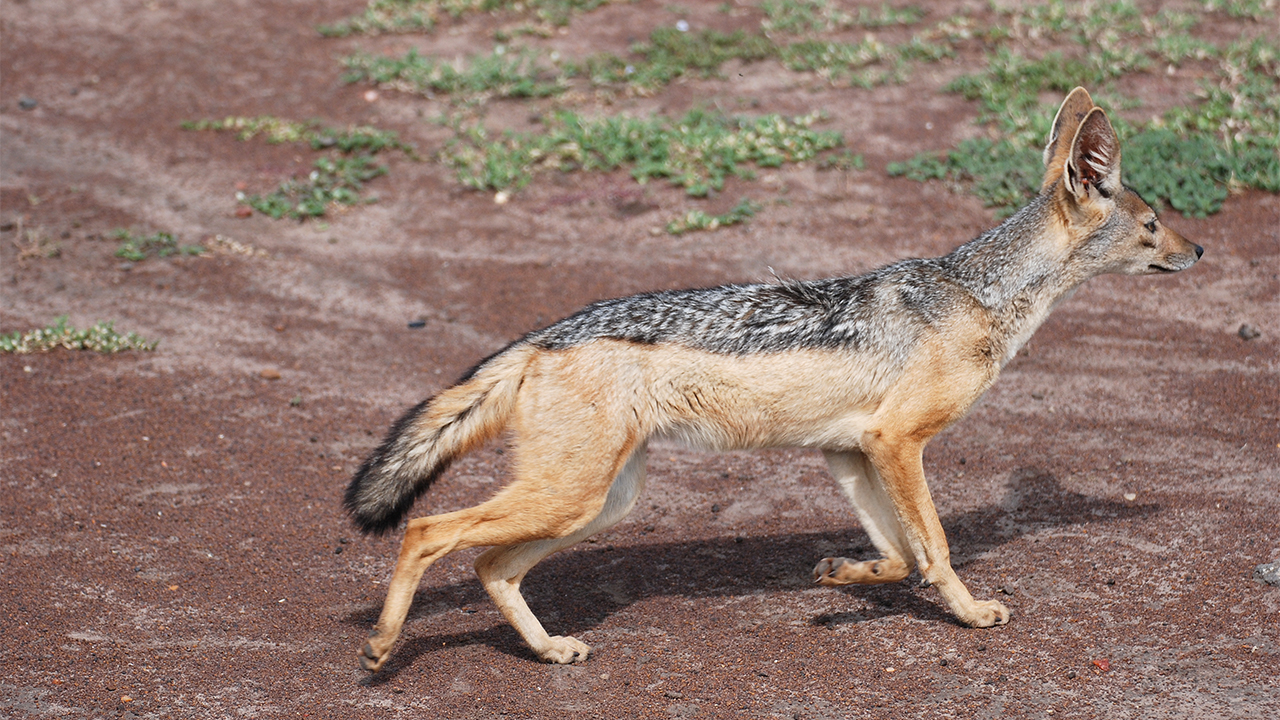
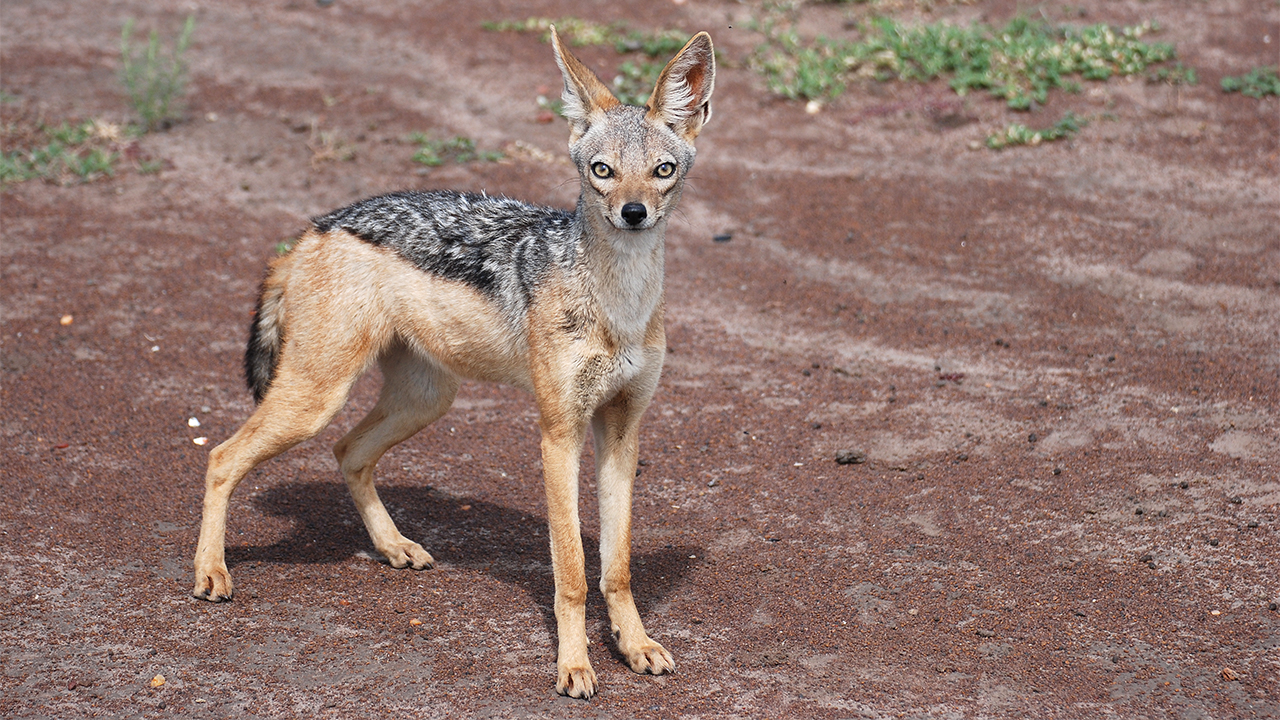
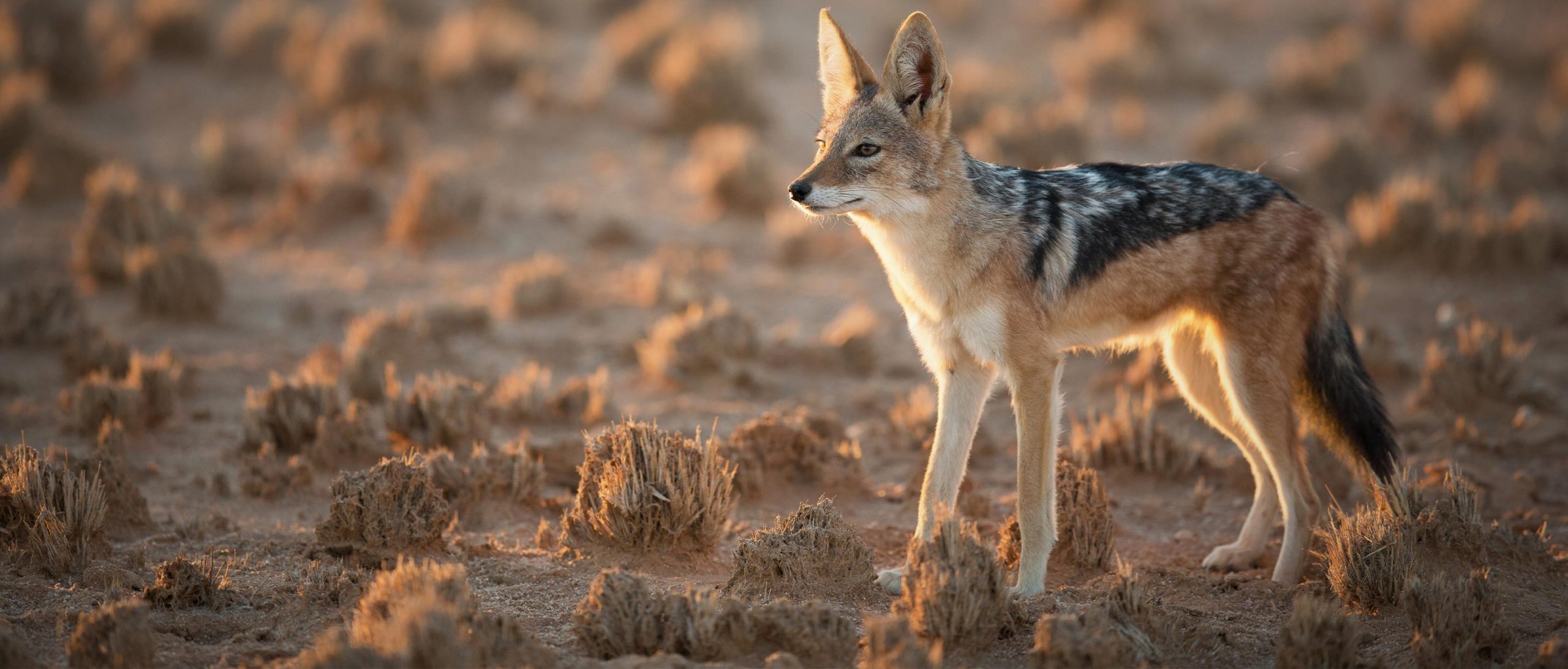
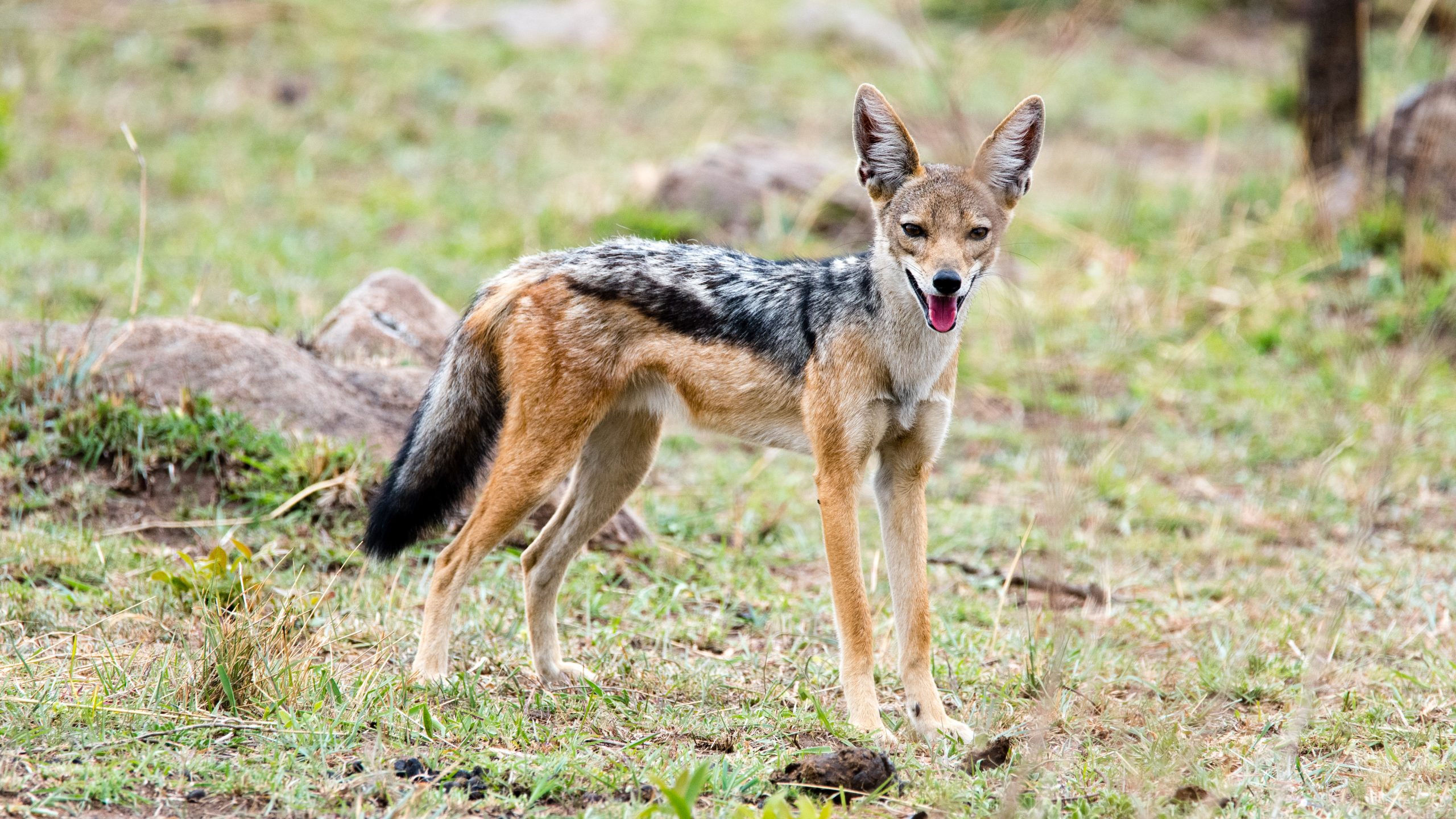
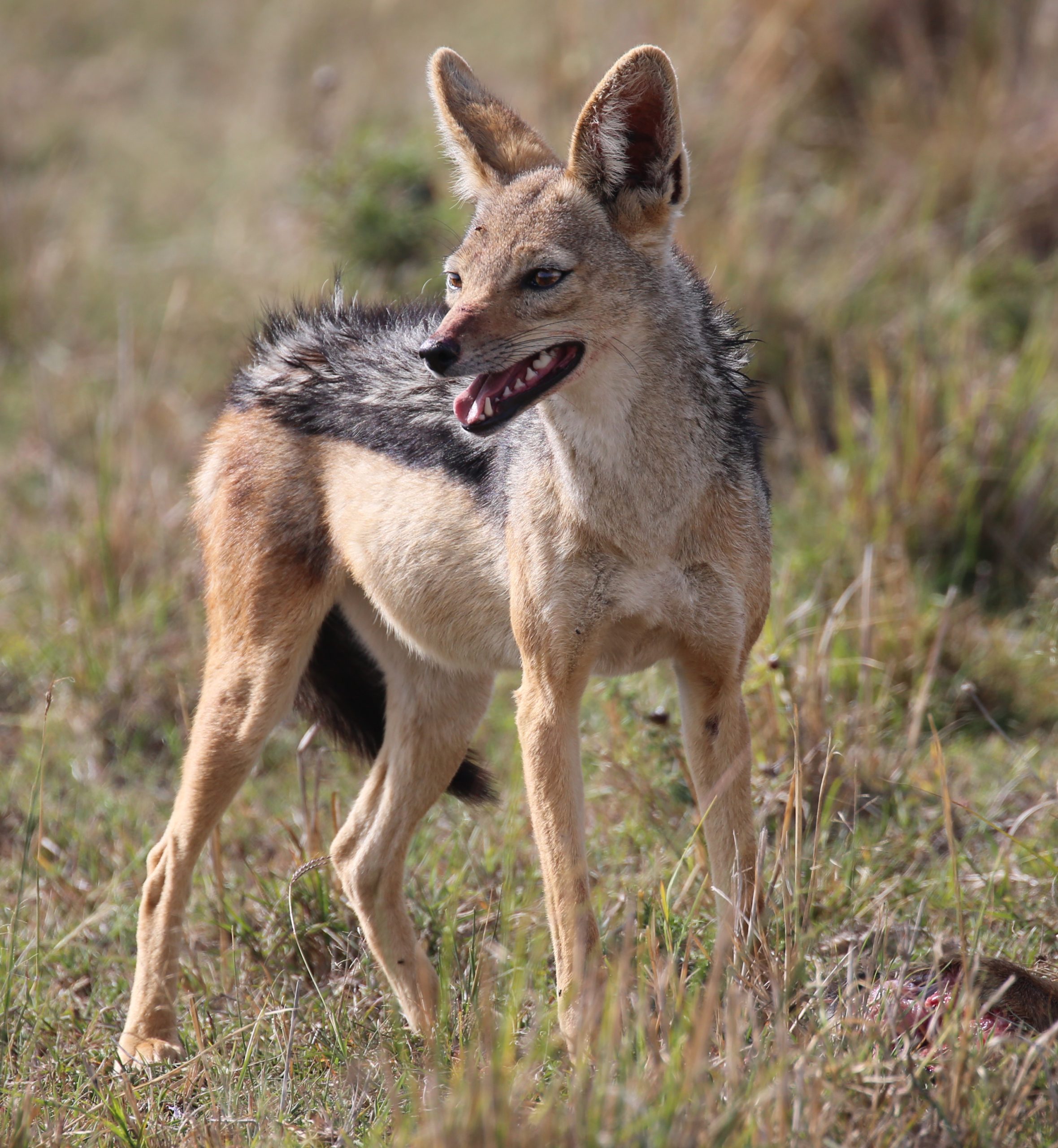
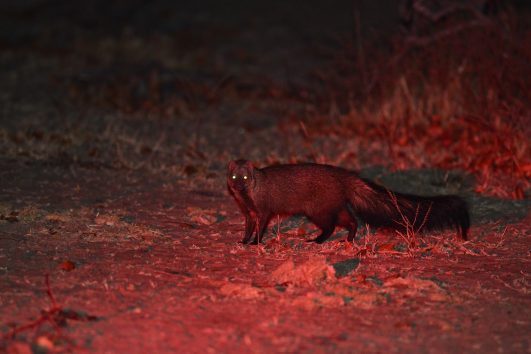
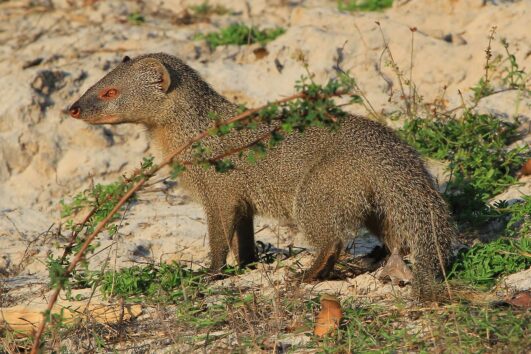

Tour Reviews
There are no reviews yet.
Leave a Review